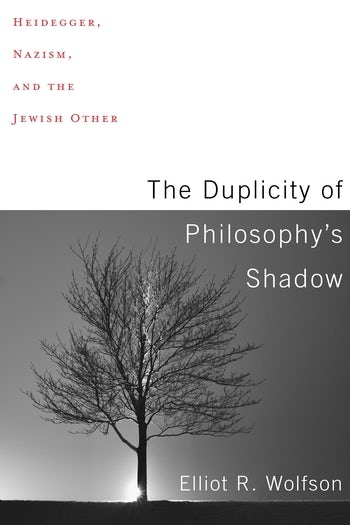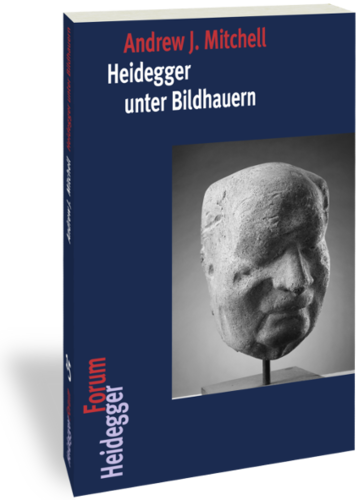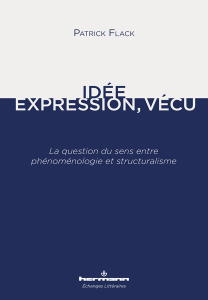 Unorthodox Analytic Philosophy
Unorthodox Analytic Philosophy
Texts in Philosophy, Volume 27
College Publications
2018
Paperback £16.00
520
Reviewed by: Jethro Bravo (UNAM/Husserl-Archiv der Universität zu Köln)
Guillermo E. Rosado de Haddock’s Unorthodox Analytic Philosophy (2018) is a collection of essays and book reviews representative of a Platonist understanding of analytic philosophy. In this sense, it is the counterpart of orthodox empiricist analytic philosophy, whose anti-universalism swings between negation and pragmatic forms of acceptance. In any case, this empiricism cannot be traced back to Gottlob Frege, as Rosado himself insists in this collection.[1]
In fact, the collection is strongly marked by the contentious approach to themes preferred by traditional analytic philosophy, like logic, mathematics and physics. I, as a philosopher formed in the phenomenological tradition founded by Edmund Husserl, was originally attracted to this book out of a hope for a possible critical exchange between both traditions. Alas, no such exchange is found here.
Nevertheless, the book speaks often of Husserl, but from the point of view of his objectivist efforts concerning logic and mathematics. Interesting topics include the simultaneous discovery of the (in Fregean terms) “sense-referent” distinction by both Frege and Husserl, Husserl’s distinction between “state of affairs” and “situations of affairs” (which I guess went unnoticed by many readers of Husserl), Husserl’s understanding of the relation between logic (syntactical) and mathematics (ontological-formal), which foreshadows that of the Boubarki School, or his acceptance of Bernhard Riemann’s views on geometry, who puts him at odds with the more antiquated Frege. He also touches upon Husserl’s notion of analyticity as a development of Bernard Bolzano, as well as Husserl’s very important understanding of mathematical knowledge as coming from a conjoined function between categorial intuition and formalization [as a side note, the treatment of categorial intuition is not so inexistent as Rosado thinks (152), one only has to look into Dieter Lohmar’s texts, who himself is a mathematician grown philosopher, just as Rosado likes to say about Husserl]. All these subjects, not excluding the case of Rudolf Carnap’s “intellectual dishonesty” in relation to Husserl’s ideas, which amounts to a sort of scandal in the philosophical realm, give a very interesting material for any philosopher -not just analytic philosophers.
Of course, the book contains other topics of interest, some of them original contributions from Rosado, like his definition of analyticity, which is strictly tied to his semantic treatment of the analytical-synthetical difference of judgements, or his many refutations of empiricism spread all over different essays. As I find the first one more attractive, I will sketch it out in what follows.
Rosado confronts the “traditional” identification of the following concepts: on the one hand, necessity, a priori and analytic; on the other hand, contingent, a posteriori and synthetic. To do this, he exposes three pairs of contrapositions, namely, necessity and contingency, which he characterizes as a metaphysic distinction, apriori and aposteriori, as an epistemological and analytic and synthetic, as a semantic (57-58). Rosado’s aim is to show in a comparison the inequivalence of the semantic notions with the other two (58), wherein the concept of “analyticity” comes to the fore. Rosado contrasts the definitions of analyticity given by Kant and Husserl. Although Husserl’s definition is regarded as more “solid” (59), it is not assumed. According to Husserl, a statement is analytic if its truth persists even when it is formalized. However, following this definition, some mathematical truths cannot be defined as analytic, e.g. “2 is both even and prime” (59-60). Therefore, Husserl’s notion, which seems to be more syntactical than semantical (60), cannot be followed. On the contrary, Rosado’s definition of analyticity is the following: “A statement is analytic if it is true in a model M and when true in a model M, it is true in any model M* isomorphic to M”, to which he adds the clause that the statement “does not imply or presuppose the existence either of a physical world or of a world of consciousness”. (61). In this sense, the Husserlian definition of “analytical necessity,” which is that of an instantiation of an analytical law, cannot be categorized as analytical. With this definition of analyticity, Rosado “attempts to delimit exactly what distinguishes mathematical statements from other statements” (72).
I think that in this context it is worth looking at the definition of necessity which is almost hidden in Husserl’s work. This definition is not metaphysical, but logical. In his Ideas I, necessity appears as a particularization of a general eidetic state of affairs and it is the correlate of what Husserl calls apodictic consciousness (Hua III/1: 19). On its turn, apodictic consciousness is the certitude that a given state of affairs cannot not-be or, to put it in Husserl’s words, “the intellection, that it is not, is by principle impossible” (96).
In the Logical Investigations, Husserl already exhibits this treatment with an interesting variation. In the third investigation, Husserl says that an objective necessity entails the subjective impossibility of thinking the contrary or, as he also puts it, the pure objective not-being-able-of-being-another-way, that is, necessity, appears according to its essence in the consciousness of apodictic evidence. Then he states that to the objective necessity corresponds a pure law, whereby necessity means to be on the ground of a law (Hua XIX/1: 242-243). We can then state that the comprehension of contingency is the exact opposite to that of necessity. That is, an objective contingency or a contingent object has the characteristic of being-able-to-be-in-another-way and the corresponding non-apodictic consciousness, both in the form of uncertainty and the possibility of thinking the contrary. However, this does not mean that objective contingency is unrelated to law or even that there are no necessary facts. As Husserl states in Ideas I, a contingent-object is limited by various degrees of essential laws and the necessity of existence of consciousness is grounded on an essential generality, through which we can recognize the mentioned subjective-objective characters (Hua III/1: 2; 98). Going beyond Husserl, not the object itself, but its being-contingent is an objective necessity based on the general eidetic law of contingency.
The treatment of the concept of analyticity by Rosado gains meaning in connection with the name he chose for “his philosophical endeavors since the 1970’s,” as an alternative to the term already taken by Karl R. Popper– “critical rationalism” (1). Rosado’s philosophy is analytic (I would not repeat why it is also unorthodox) because it has a strong tendency towards formalism in the sense of logical and mathematical analysis with the only exception being his lesser tendency to discuss physics. He believes that “you cannot do serious philosophy without taking into account the development at least of the three more exact sciences, namely, logic, mathematics and physics, but without committing to or presupposing in any sense the giant meta-dogma of empiricist ideology” (1), that is, that of the inexistence of “universals.”
Now, I think that philosophy does not need to unconditionally consider the latest developments of logic, physics and mathematics. This is clear, insofar as philosophy should not be identified with these specialized and highly technical enterprises. Philosophy’s endeavors can and must have another sense, namely, that of the examination of the fundamental concepts of scientific (in a broad sense that not only includes formal and natural sciences, but also the material eidetic sciences and the rigorous humanities) and everyday knowledge.[2] But this approach must also embrace our practical and emotional understanding in general too.
In fact, this concept of philosophy was present in Husserl since his Habilitationsschrift, which Rosado, in accordance with his Platonic point of view, sees as a “dead born child” (87). However, the most significant aspect of this very early text of Husserl does not lie in his unclear position regarding psychologism [through which, however, we can learn a lot in regard to philosophical thinking and which I would not call “mild psychologism” as Rosado does (87, 147, 162)], but in his use of the psychological analysis to clarify the phenomenal character and the origin of a fundamental concept in mathematics, namely, that of the number. For Husserl, philosophy was from the very beginning of his career a psychological analysis, which searches for the “concrete phenomena” related to a concept and the psychical process through which this concept is obtained, namely, abstraction (Hua XII: 292; 298-299). As Husserl’s analysis shows, this search is also carried out in intuition and by testing conflicting theses. In fact, Husserl’s famous argumentative style of the Prolegomena makes its first appearance in his Habilitationsschrift.
Moreover, the concept of a psychological analysis in Husserl’s Habilitationschrift is clearly distinguished from that of a mathematical, logical or even metaphysical analysis (291-292). In this line of thought, I agree with Rosado’s constant affirmation that Husserl’s logic and mathematical ideas do not lose their validity after the so-called “transcendental turn”. However, if we have to talk about a “turn” instead of a penetration of former intentions, or, on the other side, of an unchanged validity of logic and mathematics instead of a modification of this same validity by clarification of its phenomenal character and origin such that it cannot stem from logic or mathematics themselves, then this is not so easily dismissed.[3]
Also, the more developed concepts of categorial intuition and formalization as epistemological groundings of mathematics can only be examined through a phenomenological analysis, for they are processes of consciousness. We have here a more advanced case of the clarifying function of Husserlian phenomenology. Nevertheless, this contribution of phenomenology to the understanding of mathematics is not highlighted by Rosado as something that comes from outside mathematics itself, and in fact, outside any “objectifying science”.
In this same sphere of themes, it appears to me that the famous discussion of the Prolegomena presupposes a peculiar attitude of analysis that cannot be understood as pre-phenomenological, as Rosado understands it (150). If we agree with Husserl when he states that the dogmatic scientist does not question the givenness of his objects but just deals with them without further trouble (cf. Hua III/I: 54-55), then the problem of the recognition of universals and the confrontation with logical-psychologism is a problem that originates in the critical or epistemological attitude and its solution demands the clear exercise of reflection and the distinction of the different “data” given to consciousness. I believe that this is not only the true understanding of the discussion in the Prolegomena, but also that this is clearly seen in the study of the origins of this discussion in Husserl’s prior philosophical endeavors. Husserl’s philosophy started as a psychological analysis in the sense of his master, Franz Brentano, and only through the imperfection of this psychology in which there was no clear demarcation between psychological objects and logical objects the critique of psychologism became possible. To put it another way: without the prior reflective attitude towards consciousness and the confusion caused by conflating logical objects with psychological objects, i.e., without psychologism, there is no possibility of distinguishing both spheres of objects or to exercise any critique in relation to the psyche and the logical, which will be in fact missing. And the only way to solve this theoretical conflict is by means of a clear reflective analysis, in which the objects of each side are distinguished as they are given in their different sorts of acts of consciousness. The common idea that Husserl’s phenomenology is a consequence of the critique of psychologism seems to me to be false. In truth, it is the other way around.[4]
I am also not convinced that there is a Platonism of ideas in Husserl, as Rosado thinks (4). It is true that Husserl acknowledged the distinct givenness of ideal objects and that he defended his independence from empirical objects. However, this acknowledgement and defense do not make Husserl a Platonist (not even a structural one). So long as logic and mathematics, to mention two “ideal” sciences, deal with their respective subject matter, the sense and limits of their ideal objects are not in question. But when the epistemological problems start to confuse the mind of the scientist, that is, when he reflects on the relation of his objects with knowledge, then his acquiescence fades away. Now, even when the critical reflection on the mode of givenness of mathematical and logical objects shows that these objects are not to be confused with empirical data, this recognition does not amount to Platonism. On the contrary, their mere givenness, that is, the possibility of having something as “ideal objects” persists as a theoretical problem to be decided within the epistemological-phenomenological attitude. The sheer acceptance of the independent existence of these objects, that is, Platonism, cannot be conceded. On the contrary, just as realism of nature succumbs to the phenomenological analysis, so do Platonic ideas. It should be noted that Husserl was neither a psychologist in his early development, nor a Platonist at any moment of his career.
To conclude, I still would like to point out that although Rosado is well aware that for Husserl, first philosophy meant epistemology in the sense of transcendental phenomenology (145), he tries to downplay this determination by contraposing Husserl’s own definition of logic as first philosophy in his 1908 lectures on old and new logic (143-144). There, Husserl states, in effect, that the new logic is “first philosophy” (Hua M6: 7). Nonetheless, this same logic is understood as a dogmatic-positivist discipline in Formal and Transcendental Logic: logic can only be a truly philosophical logic says Husserl, as if remembering his lectures of 1908, or first philosophy, when it stays true to its original sense, already present in Plato, i.e., to the broader idea that ends in transcendental phenomenology as transcendental logic (Hua XVII: 17 ff.) Here again, the use of such beloved philosophical tags proves itself deceitful, for this enterprise resembles the empiricist’s traditional aim of exposing the origin of concepts in intuition.
Bibliography
Rosado Haddock, Guillermo E. 2018. Unorthodox Analytic Philosophy. Texts in Philosophy 27. College Publications. Lightning Source: United Kingdom.
Husserliana
II: Die Idee der Phänomenologie. Fünf Vorlesungen. 1950. Hrsg. Walter Biemel. Martinus Nijhoff: Den Haag.
III/1: Ideen zu einer reinen Phänomenologie und phänomenologische Philosophie. Erstes Buch: allgemeine Einführung in die reine Phänomenologie. 1976. Hrsg. Karl Schuhmann. Martinus Nijhoff: Den Haag.
XII: Philosophie der Arithmetik. Mit ergänzenden Texten (1890-1901). 1982. Hrsg. Lothar Eley. Martinus Nijhoff: Den Haag.
XVII: Formale und transzendentale Logik. Versuch einer Kritik der logischen Vernunft. 1974. Hrsg. Paul Janssen. Martinuns Nijhoff: Den Haag.
XIX/1: Logische Untersuchungen. Zweiter Band. Erster Teil. Untersuchungen zur Phänomenologie und Theorie der Erkenntnis. 1984. Hrsg. Ursula Panzer. Martinus Nijhoff: Den Haag.
Materialen
6: Alte und neue Logik. Vorlesung 1908/1909. 2003. Hrsg. Elisabeth Schuhmann. Springer: Dordrecht.
[1] I want to thank R. Andrew Krema for the review of the English of a penultimate version of this text.
[2] I took the idea of everyday knowledge hearing Dieter Lohmar’s lectures about modern epistemology.
[3] In fact, the problem digs deeper, because with the phenomenological clarification we attain the true understanding of the basic objects of science (cf. Hua XVII: 18 or Hua II: 22) or even of non-scientific attitudes, for example, of the world as being a horizon.
[4] I own this line of thought to an idea shared to me by my teacher and friend Antonio Zirión Quijano, who once conjectured that phenomenology does not comes from the critique of psychologism, but that this very critique indeed presupposes phenomenological analysis. If I have been true to Zirión’s intentions in my present development of his seminal idea, any possible error is of course my responsibility, not his.





